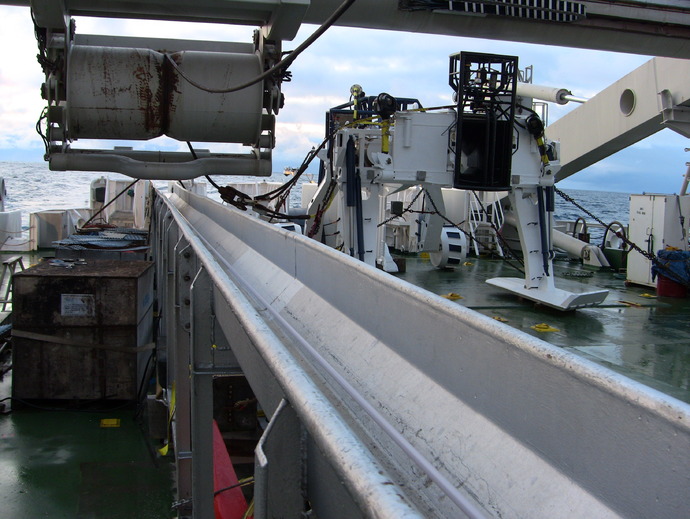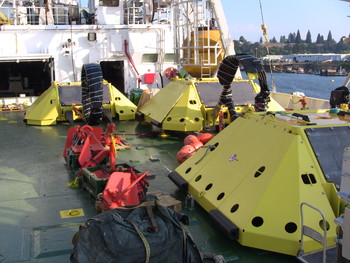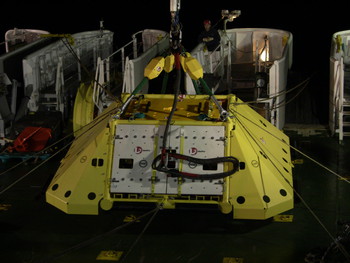Primary Cables:The OOI RSN relies on telecom industry sub-sea cable to provide power (10 kV DC, up to 8 A) and communications (10 Gb/s) via fiber-optics and copper between the Primary Nodes and the Shore Station in Pacific City, Oregon. These cables are routinely deployed across ocean basins and margins for long lifetimes. Approximately 900 km of primary, or backbone, cable were installed Summer 2011 using the commercial cable laying ship, the TE SubCom Dependable.
Primary Nodes: The Primary Nodes were installed in 2012. They are terminal points on the backbone cable. Their function is to distribute power and bandwidth (10 Gb/sec on each port) to areas where distributed networks of sensors are deployed and to high-power and high-bandwidth moorings that span the entire water column. Primary Nodes are placed in environmentally benign areas and extension cables extend to the scientific work sites. The Primary Nodes also function as "housekeepers" for system control, out-of-band communications, and engineering monitors. They house Medium Voltage Converters that convert the 10 kVdc primary level voltage to 375 Vdc levels. This lower power is sent to Low- and Medium-Power Nodes, part of what is called the secondary infrastructure, at the science work sites. Finally, Primary Nodes provide extra ports for future expansion that may span distances of >100 km.




